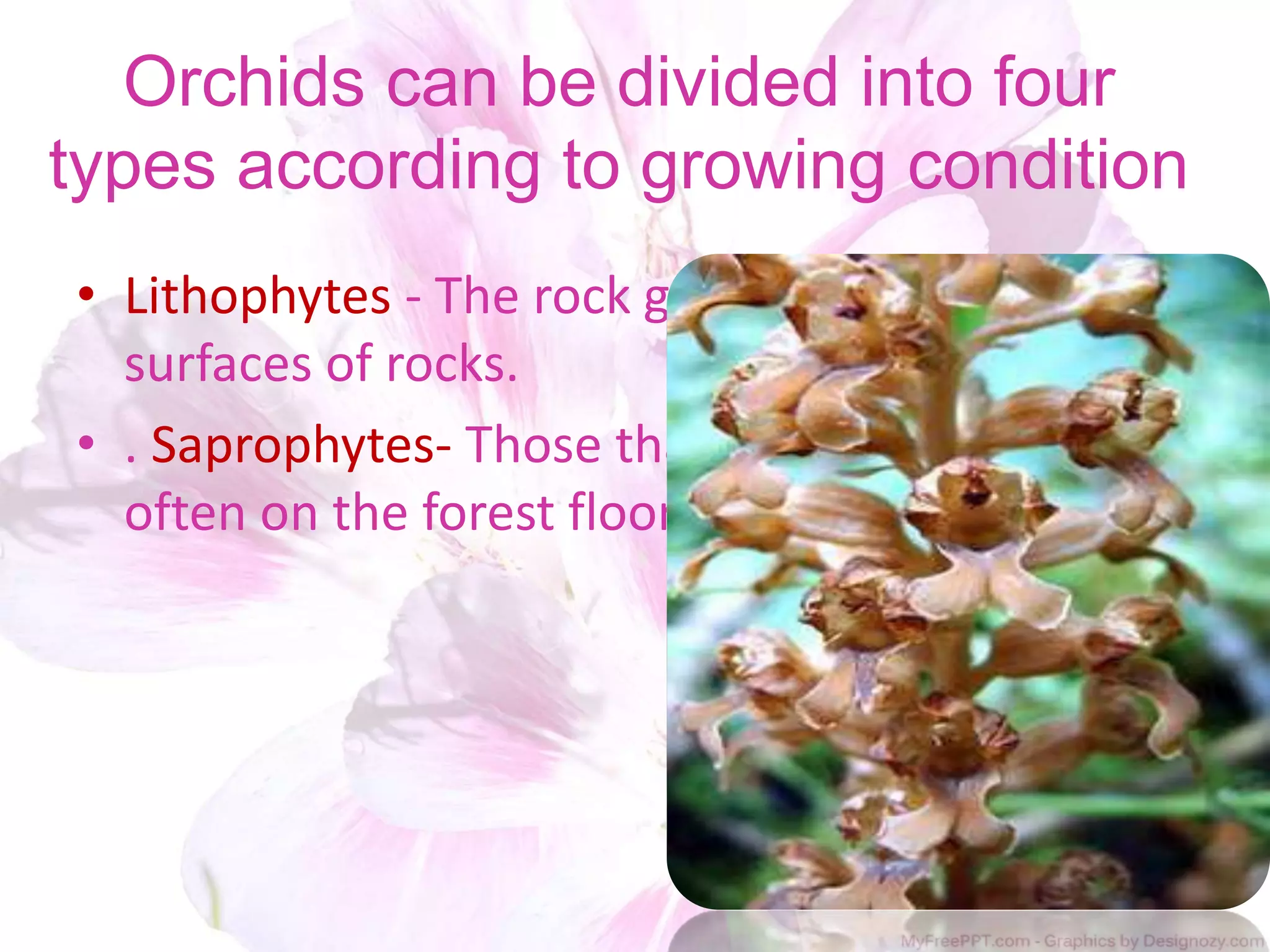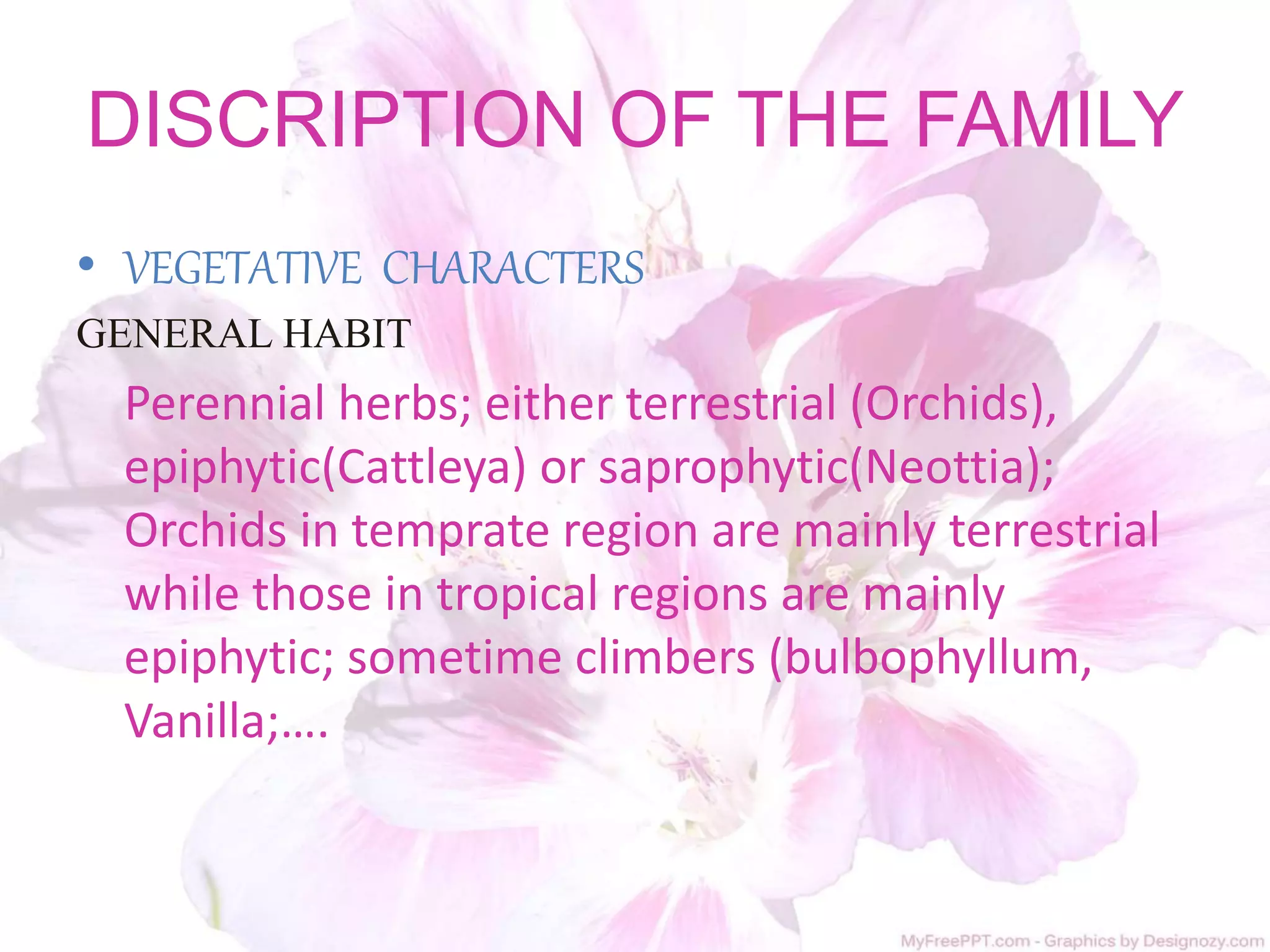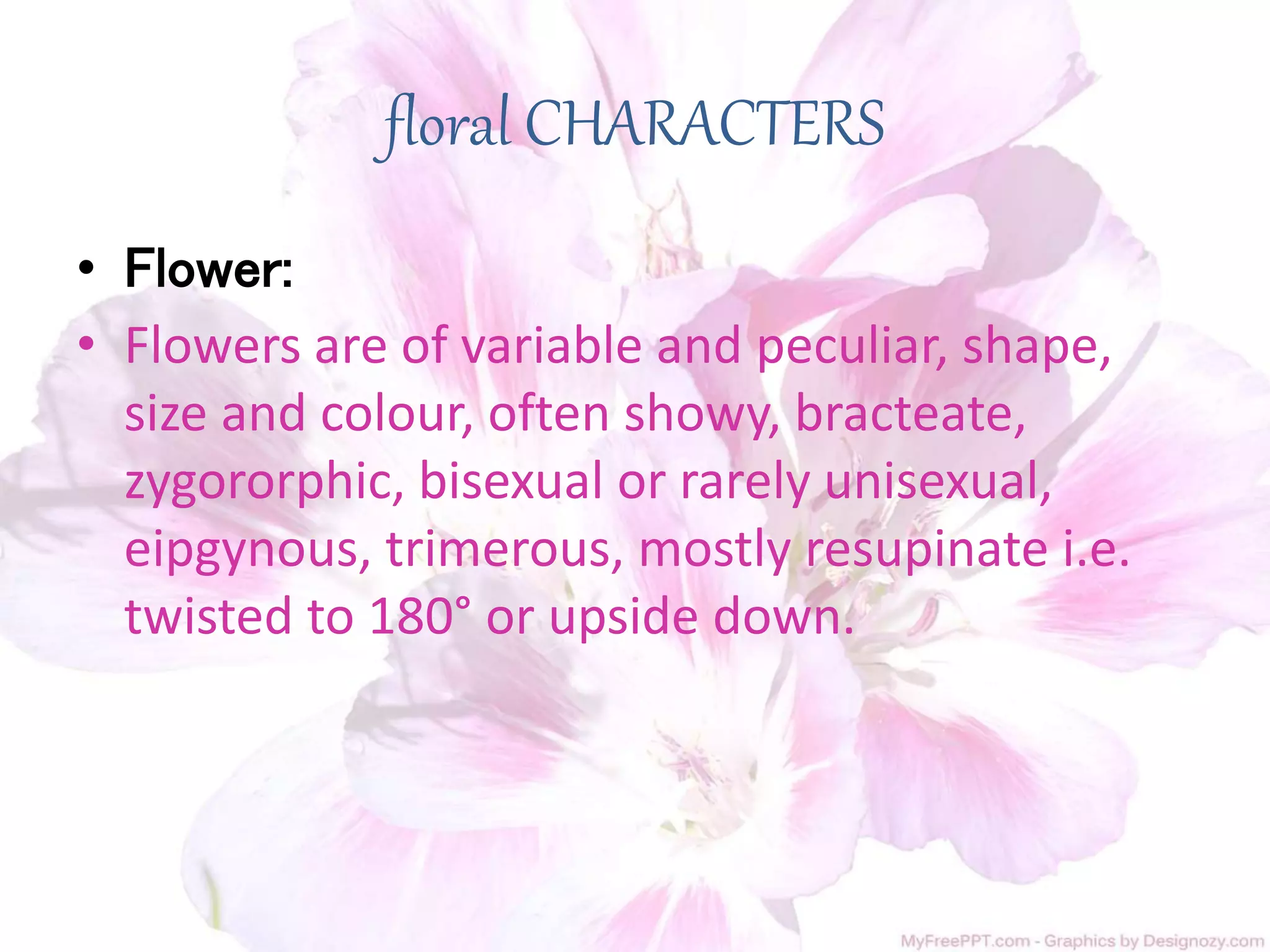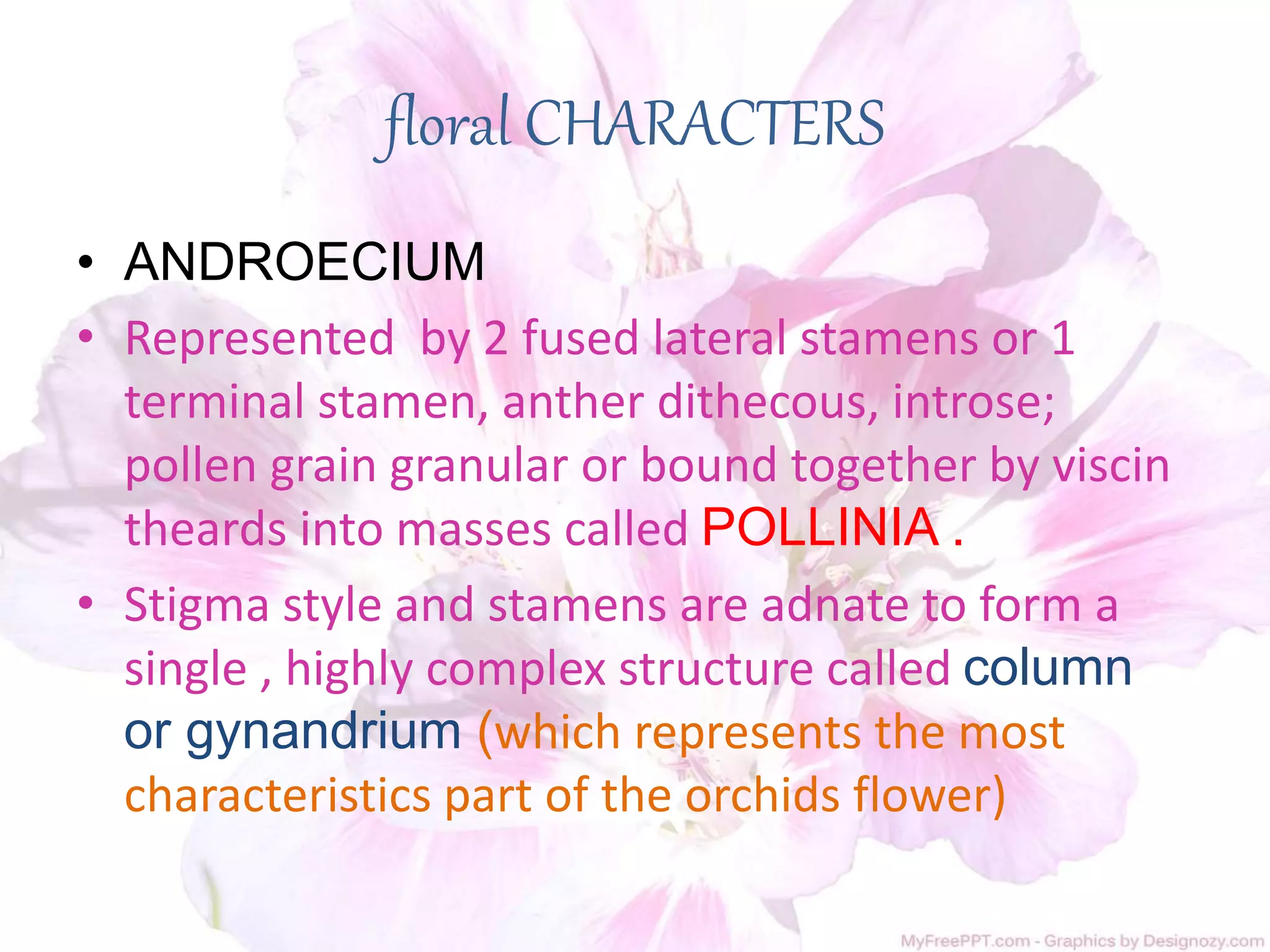The document discusses the orchid family (Orchidaceae). It describes their key characteristics such as perennial herbs that can be terrestrial, epiphytic or saprophytic. Their flowers are zygomorphic, hermaphroditic and epigynous. They have modified structures like the labellum, column and rostellum. Pollen is united into pollinia. They are one of the largest flowering plant families with over 1000 genera and 20,000 species found worldwide, especially in tropical areas. Orchids show primitive characteristics like pseudobulbs and advanced characteristics like diverse flower shapes and sizes and pollinia formation.
















































